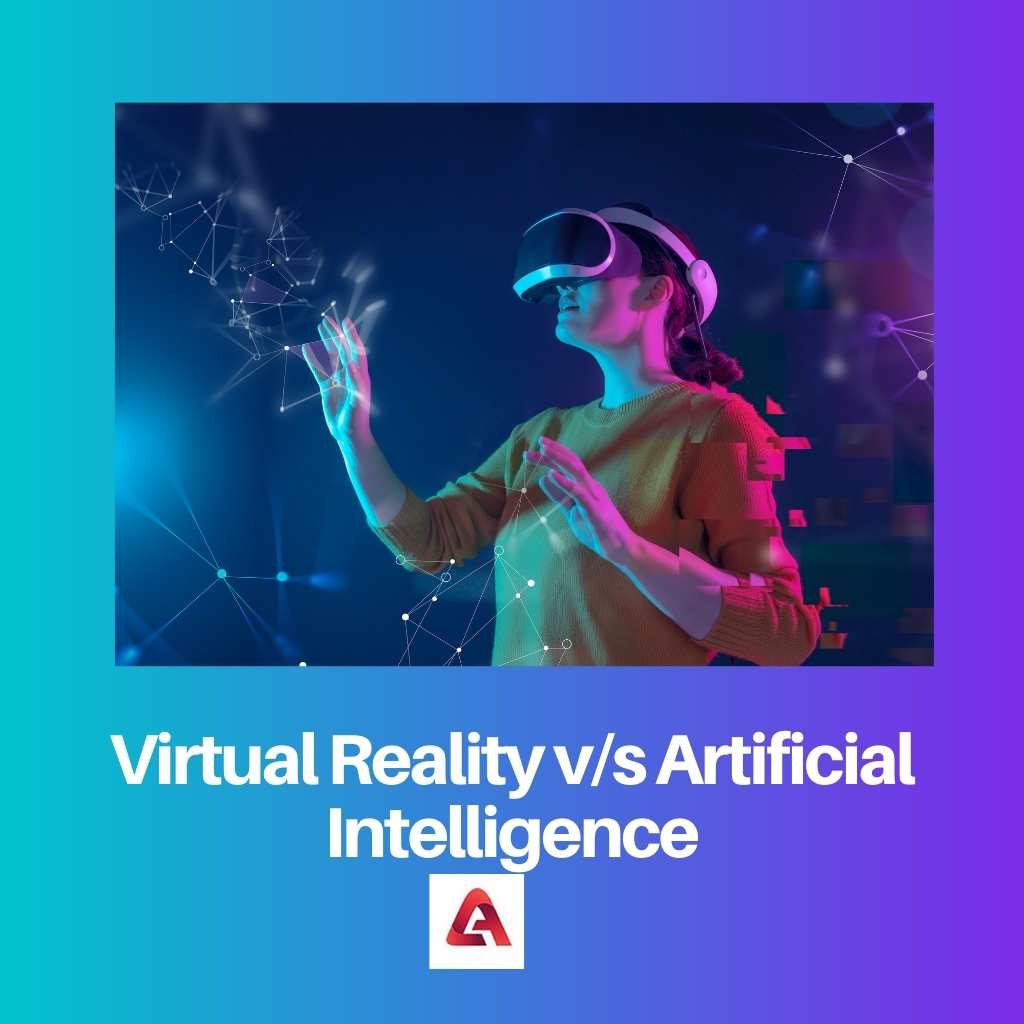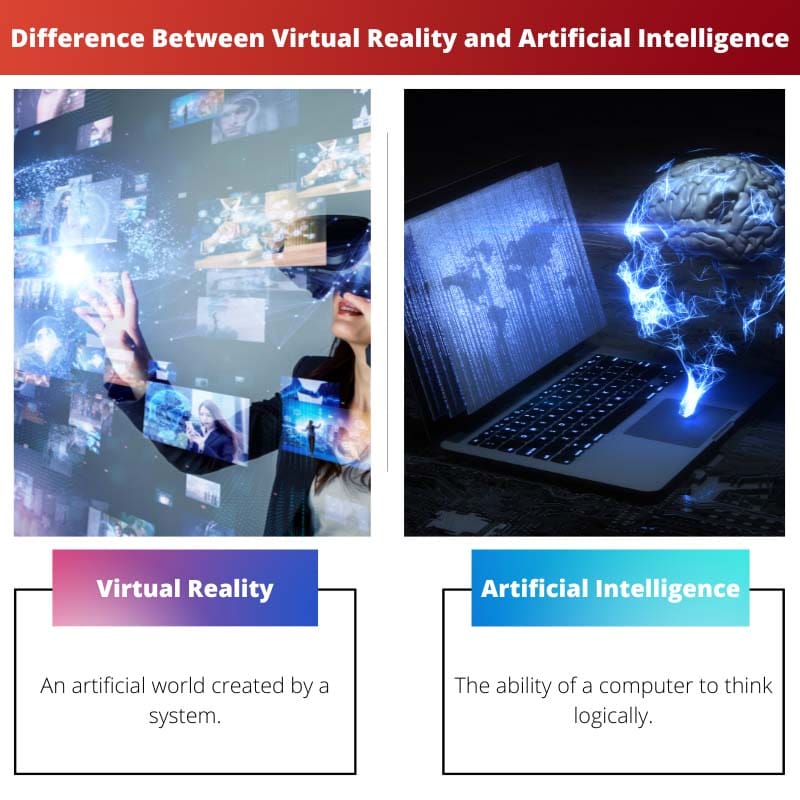The wave of our future is technology and looking at all the technology development happening at a rapid pace, we can say that that wave is here.
It touches our lives daily and has provided us with an abundance of benefits that we don’t even realize.
Back in the early 2000s, for sending texts or making phone calls, we had to have multiple devices and fast forward to today, a single sleek device can fulfill those purposes along with many other things.
This is all because of the convergence of technologies and moving ahead we can see the convergence of virtual reality and artificial intelligence.
Key Takeaways
- Virtual reality (VR) immerses users in a simulated environment, whereas artificial intelligence (AI) enables machines to mimic human cognitive functions.
- VR primarily impacts entertainment and training industries, while AI influences various sectors, including healthcare, finance, and transportation.
- Both VR and AI continue to advance technologically, but AI has a broader scope and greater potential for transforming multiple aspects of society.
Virtual Reality vs Artificial Intelligence
Virtual reality (VR) is a computer-generated environment that simulates a physical presence in a real or imagined world using a headset or other devices. Artificial intelligence (AI) is the ability of machines to perform tasks that normally require human intelligence.

Virtual Reality is a kind of interacting system that creates an artificial environment or surroundings which can be interacted with and felt by a person.
VR system is mostly used in gaming where it creates visuals that immerse a person fully into it.
This system is also used in many educational fields such as the medical field, where students can learn about the human body better by actually experiencing it through this system.
Artificial Intelligence is the potential of a computer’s brain to learn and mimic like humans to perform the tasks of human beings that require excellent evaluation without mistakes.
The system with AI can look at things in its way and act accordingly without having to get a reminder for it or commands by another person or system.
AI system works like a human brain which gives the computer the tendency to act like humans.
Comparison Table
| Parameters of Comparison | Virtual Reality | Artificial Intelligence |
|---|---|---|
| Meaning | An artificial world created by a system. | The ability of a computer to think logically. |
| System | It is both an open and closed system. | It is a closed system. |
| Self-awareness | It is a system that can generate an artificial environment. | It is a system that can make critical judgments. |
| Damage control | The network cannot be improved before developing the components. | It can make changes to fix any problems without the completion of any process. |
| Advantages | It makes learning easy and comfortable and creates a realistic world. | It provides digital assistance and minimizes human error. |
What is Virtual Reality?
Virtual Reality or VR is an artificial environment experience that can be similar to the world we live in or can be entirely different.
The applications of virtual reality are mainly used for entertainment purposes especially in video games, educational purposes such as military, medical training, and practices, and also for business purposes like virtually organized meetings.
Augmented reality AR and mixed reality are two other types of VR style technology that can do known as extended reality or XR.
Nowadays, the standard system of virtual reality utilizes virtual reality headsets or multi-projected surroundings to create images that look real, sounds, and other stimulants that stimulate the user who is physically present in that virtual environment.
A person who uses the equipment of virtual reality can watch an artificial world and interact with all the things that are present in that world.
This effect is generated by using VR headsets that have a head-mounted display with a small screen placed right before your eyes which fully immerses you into the artificial world.
The headset used in VR has two monitors with small and high resolution for providing different images for both the eyes for stereoscopic graphics that provides a three-dimensional virtual world.

What is Artificial Intelligence?
Artificial Intelligence or AI are the terms coined by John McCarthy in the year 1955, which is the potential of a computer or a machine to learn and think like humans.
AI is also a field of study that was introduced to make machines smart, which means that the machines with AI can work on their own without asking for commands.
Generally, the term Artificial Intelligence is used for the programs that imitate human behavior.
The ideal intelligent machine is a flexible agent that can perceive the environment and take appropriate action to maximize the chances of being successful in achieving their goals.
Today, the term AI is mostly used for understanding human speech successfully, competing in strategic games like Chess, driving cars, and translating difficult data.
AI is also considered to be a danger for humankind if it goes on progressing at its current speed.
The main purpose of creating a system with AI is to achieve the goal of thinking, learning, and solving problems logically.
Ultimately researchers are hoping to create an AI system that can solve multiple problems at once instead of focusing on a single problem.
They are also trying to create an AI system that has emotional and creative features which can be able to empathize or can create art.

Main Differences Between Virtual Reality and Artificial Intelligence
- Virtual Reality is an imitation of an actual world generated by a computer system, whereas artificial intelligence is a mimic of human intelligence performed by a system to solve problems logically.
- Virtual Reality is an open and closed system as it mimics the environment, as well as the person in virtual reality, feels everything, whereas artificial intelligence is a closed system because it has a learning mechanism.
- Virtual Reality is a system that has the potential to create an artificial world that feels real, whereas artificial intelligence is a system that is capable of making critical judgments.
- For improving the network, virtual reality first needs to develop all of its components, whereas artificial intelligence does not need to complete the progression of any components; it directly fixes the issue when they become a problem.
- Virtual Reality helps people to experience various environments virtually, whereas artificial intelligence helps in evaluating problems and giving solutions without human error and is faster with 24*7 availability.




